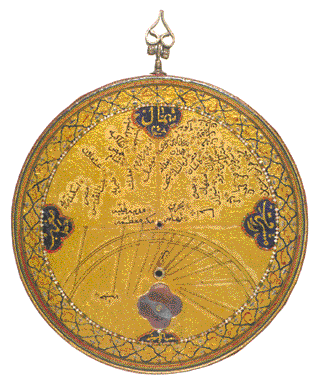
Lines of Faith
Sacred
Direction
"Turn then thy face
towards the Sacred Mosque;
wherever ye be, turn your faces towards it"
(2.144)
Central to Muslim life is to know the direction of the Ka'aba
- a holy shrine in the city of Mecca. This "sacred direction", the
Qibla, is faced during all ritual acts, such as prayer.
The
earliest qibla-indicator was the road taken by pilgrims to Mecca, but when the
astronomical alignments of the Ka'aba were established, the Qibla could be found
by observation of the movement of certain stars, or the sun. As the Islamic
world became sophisticated in the fields of astronomy, geography and
mathematics, techniques based on trigonometric formulae provided the required
direction. One of the greatest achievements in determining the qibla was the
work of al-Khalili, who produced a method of determining the Qibla based on
spherical trigonometry.
Such knowledge led to the creation of instruments such as
qibla-indicators and pin-gnomon dials, which codified complex astronomical
information and mathematics. Using such instruments, with basic local
geographical knowledge a relatively uneducated person could accurately find the
Qibla for any location in the Islamic world.